The original Fossil Gen 6 kind of got shafted. While Fossil was still developing the watch, Google and Samsung sprung the news that Wear OS 3 was on the horizon. Fossil apparently found out at the same time as the rest of us. Then, Qualcomm announced a newer, faster wearable chip. By the time the Gen 6 debuted, it was running a soon-to-be last-gen chip — and Samsung’s first Wear OS 3 watch, the Galaxy Watch 4, was already out. It wasn’t Fossil’s fault, but the Gen 6 was outdated before it ever hit shelves. Unfortunately, it seems like the brand-new $299 Gen 6 Wellness Edition, Fossil’s first native Wear OS 3 watch, got the short end of the stick, too.
Like the original Gen 6, the Wellness Edition has a Qualcomm Snapdragon 4100 Plus chip. It’s got the same 1.28-inch OLED display, the same 1GB of RAM, and the same 8GB of onboard storage. The Wellness Edition also has the same sensors. It’s effectively the same watch, with a slightly different aesthetic and Wear OS 3 installed out of the box. (Older Gen 6 watches shipped with Wear OS 2 but can now be updated to Wear OS 3.) In retrospect, I’m not sure what I thought would be different this time around. But, having spent time with all the available Wear OS 3 watches out there, it feels like there are two tiers of the operating system: the Wear OS 3 you get on Samsung and Google watches and the one everyone else is stuck with.
Looks ain’t everything
The 44mm Gen 6 Wellness Edition is a stylish watch. Although it’s slightly bigger than my 42mm Gen 6, I dig the sleeker overall aesthetic, and I prefer the more modern take on the buttons — I had fewer accidental presses this time around, thanks to the flatter profile of the pushers. You can easily swap out the default 20mm silicone straps, but I wouldn’t be ashamed to wear it as is to a formal event. It’s comfortable for everyday wear, and while it wouldn’t be my first choice for fitness tracking or even in the top five, the stainless steel case adds a bit of extra durability. Just don’t take it in the pool, as it’s only got 3ATM of water resistance. That’s fine for washing dishes but isn’t considered safe for swimming.
But a snazzier design isn’t enough to redeem the Gen 6 lineup as a whole. The big thing I was looking for with the Wellness Edition was a better overall experience. I got that, but I ended up with some unexpected annoyances, too.
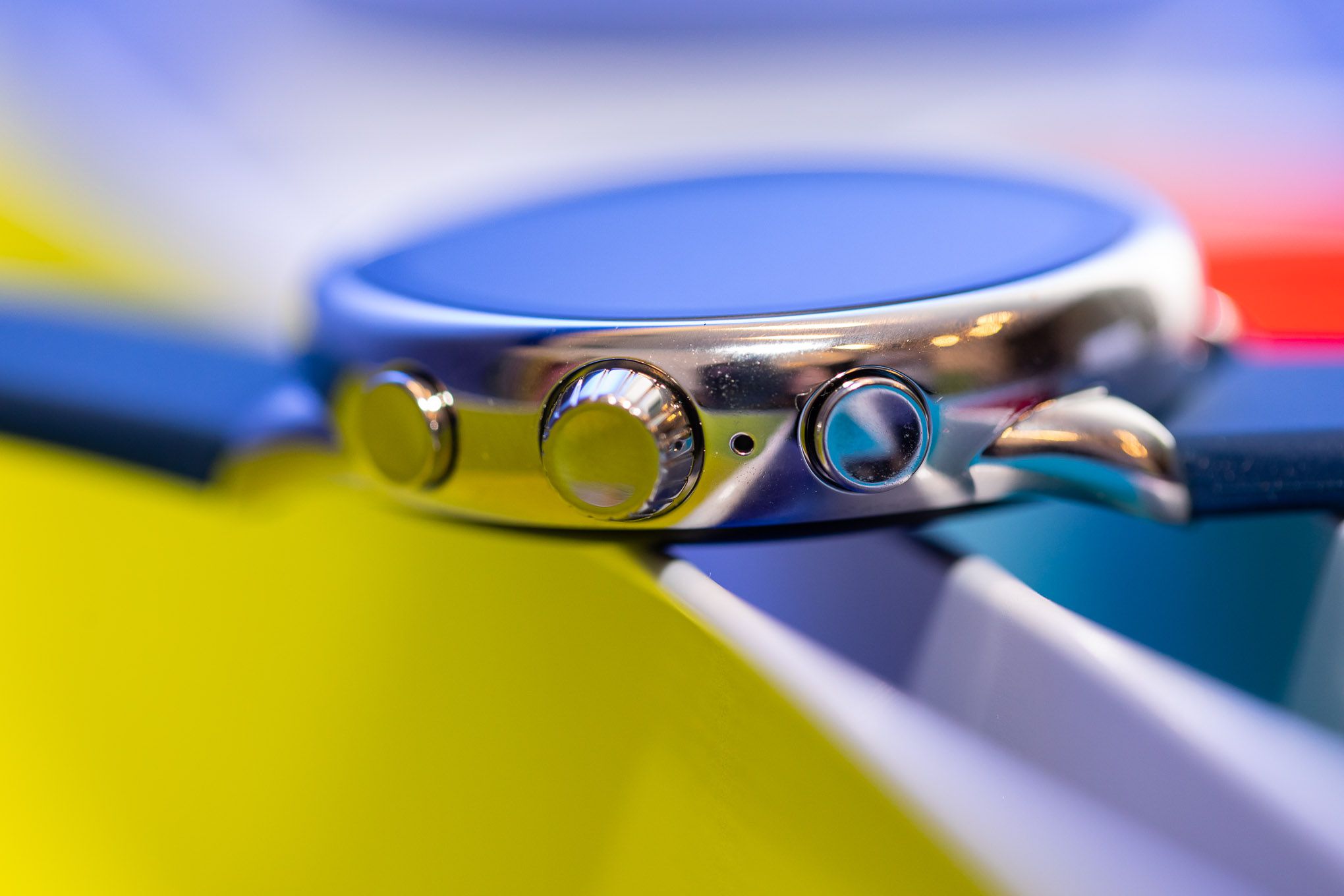
Wear OS 3 on the Gen 6 is better than Wear OS 2, but not necessarily faster. Scrolling through menus is zippy, and notifications pop up quickly. But sometimes, there’s a slight pause when you launch apps, or a screen freezes for a hot second before moving along. When I tried to download Strava via the on-wrist Play Store, it crashed. Multiple times. And when the search did “work,” Strava never actually appeared as a downloadable app. I ended up having to push it from the web version of the Play Store, but it took a while before it installed. This is so weird since I’ve definitely downloaded Strava from the on-wrist Play Store onto every other Wear OS 3 watch I’ve tested. It wasn’t a huge issue because Adidas Running came preloaded, and you can also track workouts via the native Wellness app. But still.
None of that made the Wellness Edition unusable. It was just odd. But aside from occasional stutters, Wear OS 3 was still an improvement. It was so nice to have more third-party apps that actually work. You could use Spotify on Wear OS 2, but it wasn’t a great experience. It’s much improved in Wear OS 3 and finally supports offline playlists. You can also use YouTube Music, SoundCloud, or Deezer. (Does anyone use Deezer?)
It was so nice to have more third-party apps that actually work
However, it’s not better than Wear OS 3 on the Pixel Watch or the Samsung Galaxy Watch 4 and 5 lineups. I suspect some of my performance issues were due to the 4100 Plus chip, which launched in 2020 but didn’t really appear in many watches until the end of 2021. By then, Samsung had already moved on to a next-gen chip for its Galaxy Watch 4 and 5 lineups. The Pixel Watch uses a last-gen Samsung chip, but it’s been bumped up to 2GB of RAM to make up for it. I have a feeling a future Fossil Watch running the Snapdragon W5 Plus chip will perform better, but that’s not an option just yet.
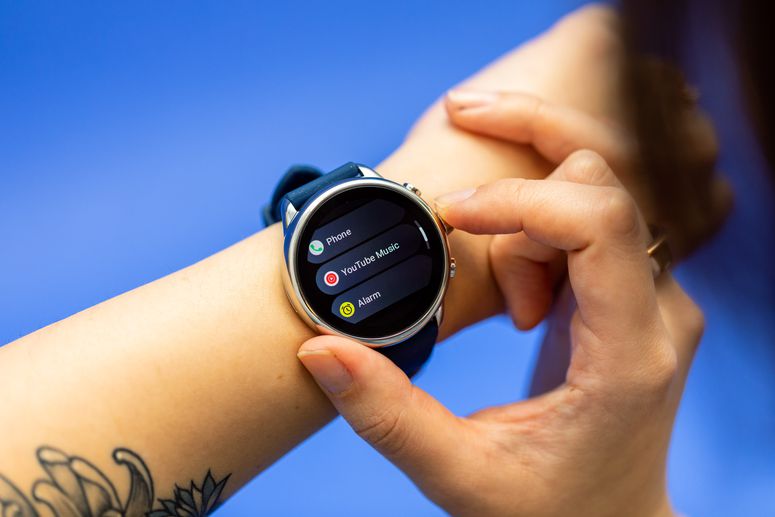
Wear OS 3 has a much better-maintained third-party app ecosystem than Wear OS 2 did.
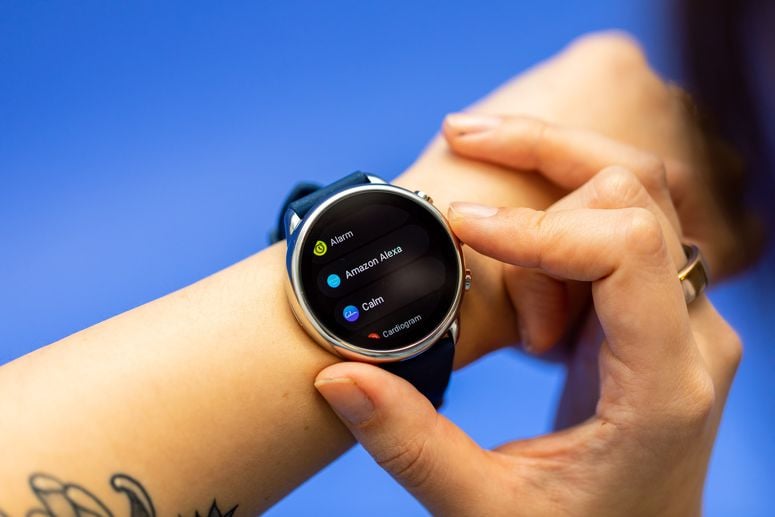
Google Assistant is missing, but at least you have Amazon Alexa?
But Wear OS 3 itself has more features on Google and Samsung watches. Those watches have Google Assistant. The Gen 6 Wellness Edition does not. It’s unclear if that’s coming sometime in the future, but for now, you’ll have to make do with Amazon Alexa. (It’s fine.)
Alexa is better than nothing, but a smartwatch running Google software ought to have Google Assistant. For health and fitness tracking, Google and Samsung’s Wear OS watches have strong native apps, too. Fossil has the Wellness app, but while it’s aesthetically pleasing, it’s not integrated well into the overall Wear OS 3 experience. The Pixel Watch has a Fitbit integration, which, though imperfect, is more polished than Fossil’s Wellness app. It’s easy to see a daily Fitbit dashboard in your Tiles as well. Samsung’s watches have Samsung Health, which also integrates more smoothly within the One Watch UI skin Samsung runs over Wear OS 3. Even the old Google Fit Tiles could at least give you a quick visual of how far along you were in your daily goals.
That brings me to Fossil’s new companion app. Wear OS 3 has done away with the old Wear OS app, meaning companies have to drum up their own companion apps. Montblanc did it with the Summit 3, and Fossil’s done it here, too. This puts non-Google and non-Samsung Wear OS watches at a disadvantage. Google has the Pixel Watch app, while Samsung has the Galaxy Wearable app. For health, they rely on the Fitbit and Samsung Health apps. It’s not elegant to rely on multiple apps, but settings are easy to edit, and there are ample ways to view your daily and historical health data.
No offense to Fossil, but its app is skeletal. It looks pretty, and it’s more than adequate at swapping watchfaces and customizing Tiles. But viewing historical health data is, to put it nicely, unintuitive, and the minimalist data isn’t that useful. Then again, at least you can view health data in the Fossil app at launch. You couldn’t with the Montblanc app when I tested, and I don’t have it anymore to check.
The one “edge” Fossil’s got over Google and Samsung is that its version of Wear OS 3 is iOS compatible. But this is more of a philosophical win for people who either double-wield Android and iOS phones or like to switch between the two platforms. iOS loyalists are much more likely to opt for an Apple Watch or maybe a Garmin if they’re really into fitness.
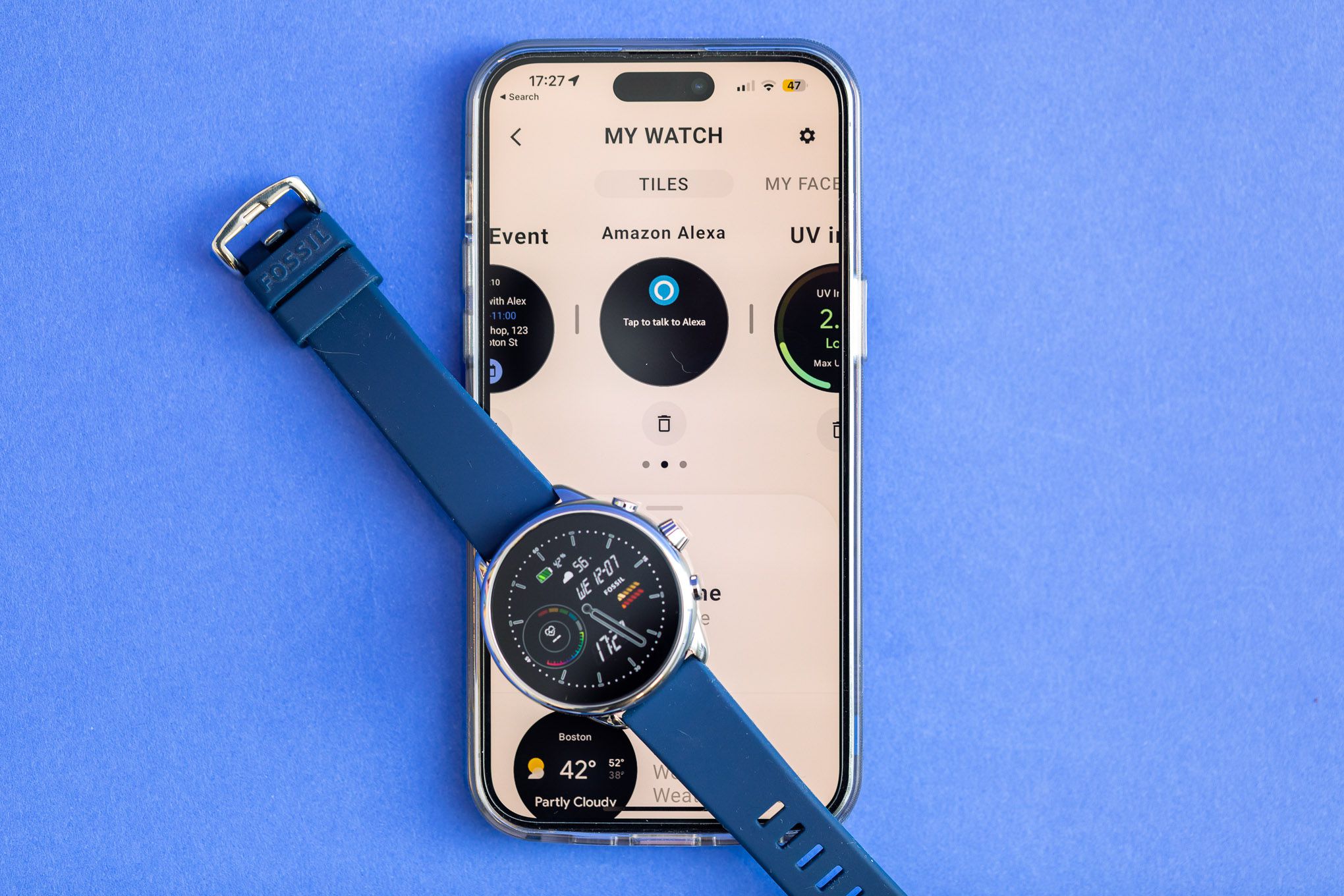
What is up with the battery and settings?
Over the years, Fossil has tried to take the sting out of the not-so-great battery life on its watches. It was one of the first to add fast charging and multiple battery-saving modes. But it is almost 2023, and a smartwatch has got to last you through the workday. This one rarely did.
With the always-on display enabled, I was lucky to make it to bedtime before the watch automatically switched to one of its battery-saving modes. One day, I had AOD on and took the watch off the charger at 9AM with 100 percent. By 11:30AM, it was down to 69 percent. So far, all I’d done was sit at my desk and hop on the bus to go to work. I got more mileage if I turned AOD off, but going for a 30-minute GPS run still meant I had to top off the battery before bed if I wanted to track sleep.
At the very least, Fossil’s made it so that the watches charge super fast. You can get up to 80 percent in 30 minutes.
I tried futzing around with some settings to see if I could stretch battery life further, but that led me to another one of the Wellness Edition’s quirks. It would seemingly reset my settings when I stuck it on the charger. Not every time, but often enough to gaslight me. For example, I always turn off sounds on smartwatches. My marriage depends on it. My spouse hates all sorts of electronic dings, beeps, and bloops, but they especially hate Fossil watch alerts. And yet, the sounds kept turning back on. I truly have no explanation for it, and I hope it’s something Fossil fixes in future updates.
Better at fitness than wellness
The Gen 6 Wellness Edition is not particularly good at wellness. Take SpO2, or blood oxygen, monitoring. As with the Apple Watch and Samsung Galaxy Watches, you can take SpO2 spot checks with the Wellness Edition. It’s a relatively new addition to Fossil watches, which I was happy to see since it was a sign that Fossil was making headway as far as advanced health tracking goes.
Too bad that the first time I tried it, the watch said my SpO2 levels were at 83 percent. For context, 95 to 100 percent is considered standard, while anything below 90 percent is reason to seek medical care. Of course, I tried to see if this was a one-off, but the watch then failed to complete several subsequent readings. It kept telling me to wear my watch higher on the wrist and to adjust the strap, but neither seemed to make a difference. (I also couldn’t have worn it any tighter — it was on the smallest possible strap hole.) I rebooted the watch, and that seemed to do the trick, but I still got more errors than I usually do with smartwatch SpO2 readings.
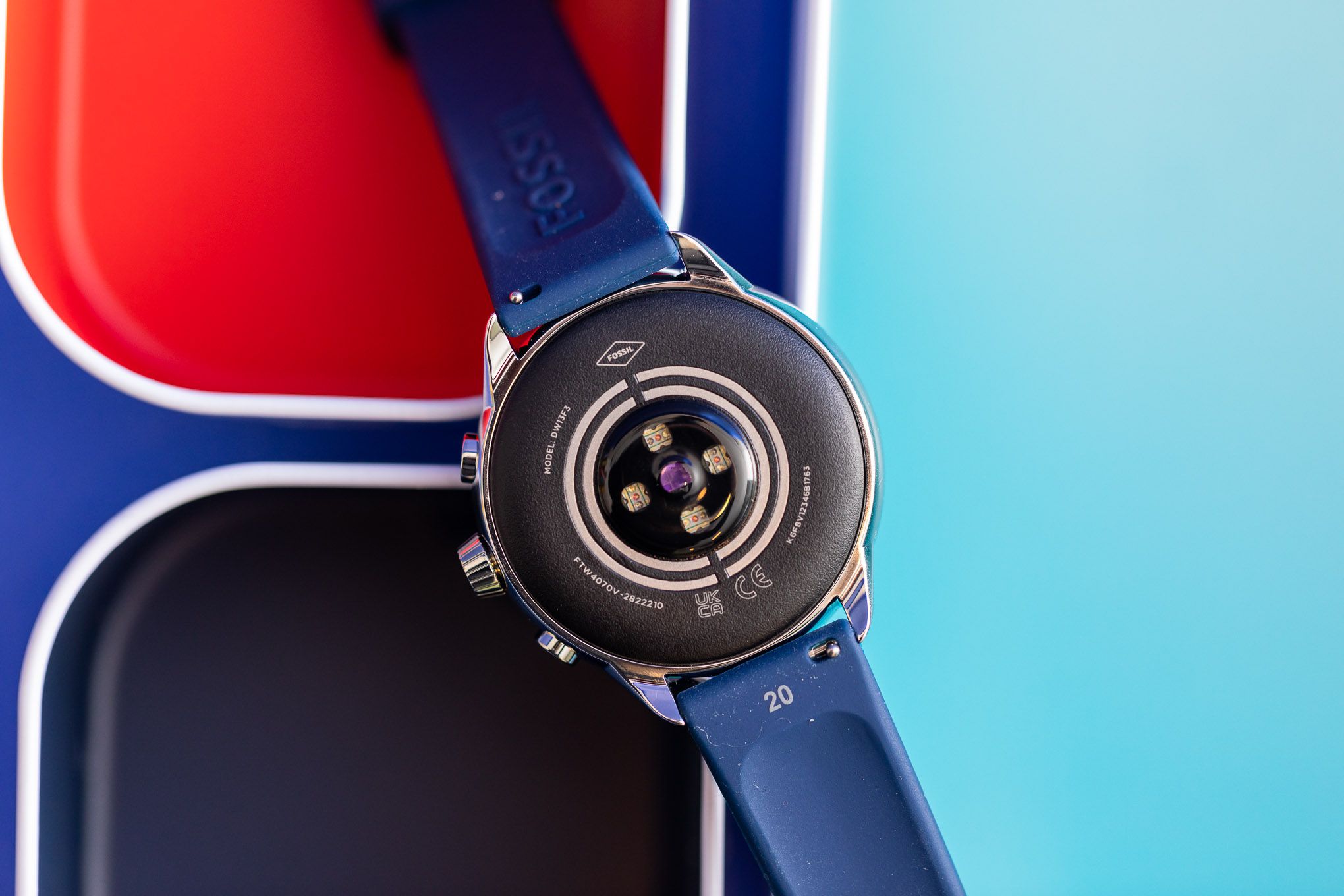
The other metric I’d been looking forward to was Cardio Fitness, or VO2 max. But even though I’ve been wearing this watch for over a week, I’ve yet to get a score. Fossil’s troubleshooting FAQ says that you should be able to get a score in about 24 hours but that intermittent wear might mean taking over a week. I’ve been wearing this watch all day, every day, except for when it’s on the charger or when it dies while I’m out and about. I’m still only 60 percent of the way to a Cardio Fitness score. It’s not unheard of to wait that long to collect enough data for a metric, but it is longer than average for VO2 max.
The Wellness Edition can track sleep, but it’s not a good sleep tracker because of its poor battery life. A few times, the watch had switched over to time-only mode before I woke up, even though I’d gone to bed with at least 40 percent. (That’s the minimum most other smartwatches suggest for sleep tracking.) The result was that my sleep data was unreliable because the watch cut sleep tracking early. For instance, on a night that my Apple Watch Ultra and Oura Ring tracked 7.5 hours of sleep, the Fossil tracked 4.5 hours. All three devices were around 30–40 percent charged, but only the Fossil failed to make it to the next morning. It doesn’t mean sleep tracking is impossible — it just means you’ve got to be much more mindful of battery levels than you would with other devices.
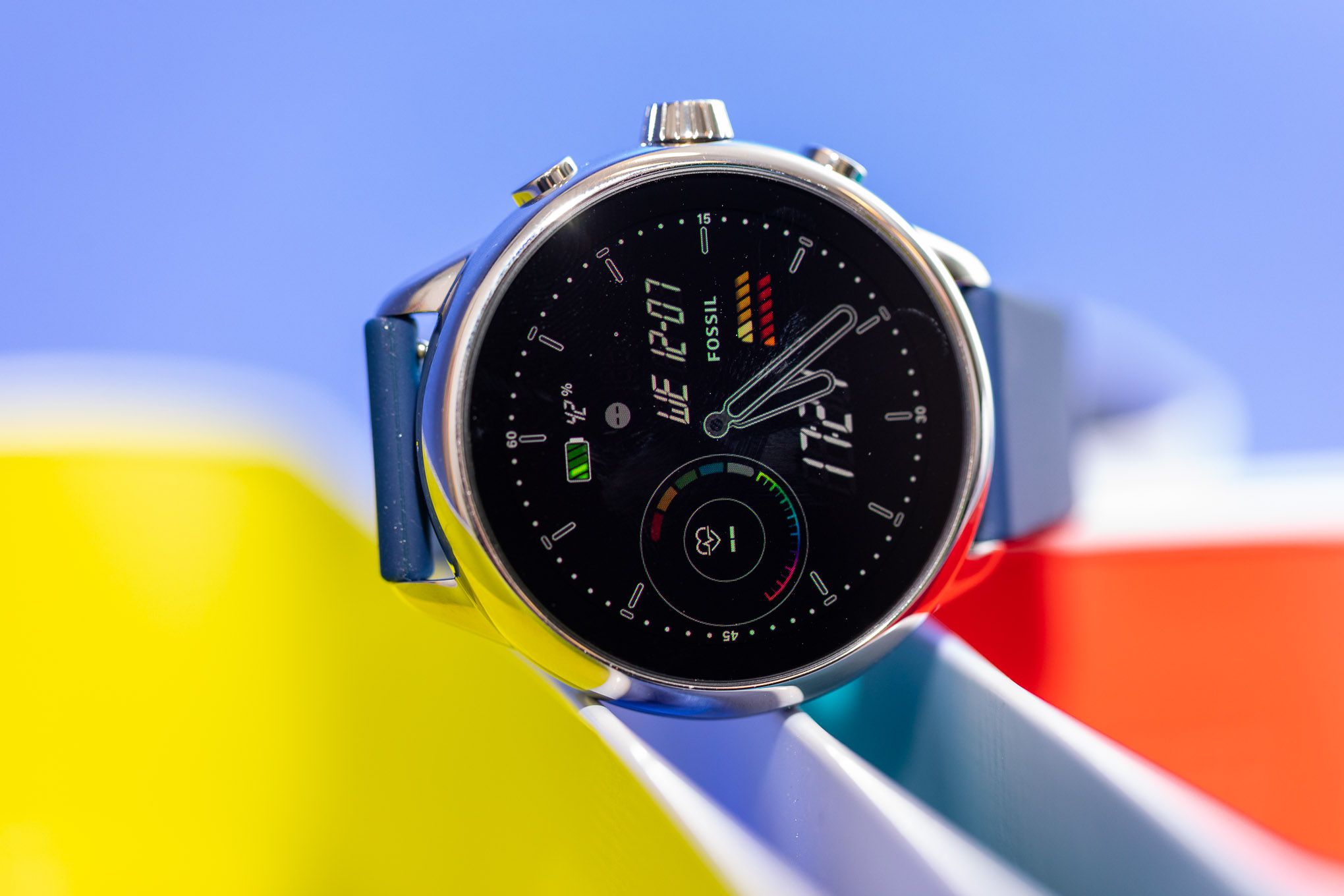
On the other hand, the Wellness Edition was way better at tracking my outdoor runs than other recent Fossil watches I’ve used.
Here’s how GPS tests tend to go with Fossil watches. I strap it on, start up the native fitness tracking app, do my little run, and facepalm when I load up the recorded map. Usually, there’s a stretch where the GPS says I’m running in the East River or zigzagging through walls like Kitty Pryde. Not this time. I went on two 30-minute runs, which I recorded on my phone, the Gen 6 Wellness Edition, the Garmin Fenix 7S Sapphire Solar, and the Apple Watch Ultra. The GPS maps corresponded across all four platforms, as did heart rate, pace, and distance data. That’s a big improvement over the Fossil Gen 5 lineup. Otherwise, heart rate, pace, and distance data were also on par across all four devices.
This is still a fashion smartwatch, even if it is called the Wellness Edition
I don’t expect a whole lot from Fossil watches on the health and fitness front. This is still a fashion smartwatch, even if it is called the Wellness Edition. So even though my results here were incredibly mixed, I wouldn’t say that’s a major con. As long as you’re aware that these features aren’t the main focus, you can still use this watch for casual health and activity tracking.
Patience is a virtue
For the last few years, I’ve told Android users to wait for the next Fossil watch. I’m loath to give that advice again, but history seems to keep repeating itself. Once again, Fossil’s done the best job it can to make lemonade out of Wear OS’s lemons. But older hardware and a less-finished version of Wear OS 3 hasn’t set up any of the Gen 6 watches for success.
That said, if you’re picking between a Fossil Gen 6 (or the Skagen Falster 6, Michael Kors Gen 6, etc.) and the Gen 6 Wellness Edition, I’d go with this. Fossil has started rolling out Wear OS 3 to the vanilla Gen 6, but you’ll save time if it’s preloaded. Even if that’s not a concern, the Wellness Edition has a more elegant design, and the stainless steel case is a perk. I’d also definitely pick this over the Montblanc Summit 3. Not only will you save roughly $1,000, but it’s also a less bulky watch, and the Fossil companion app is marginally better, too.
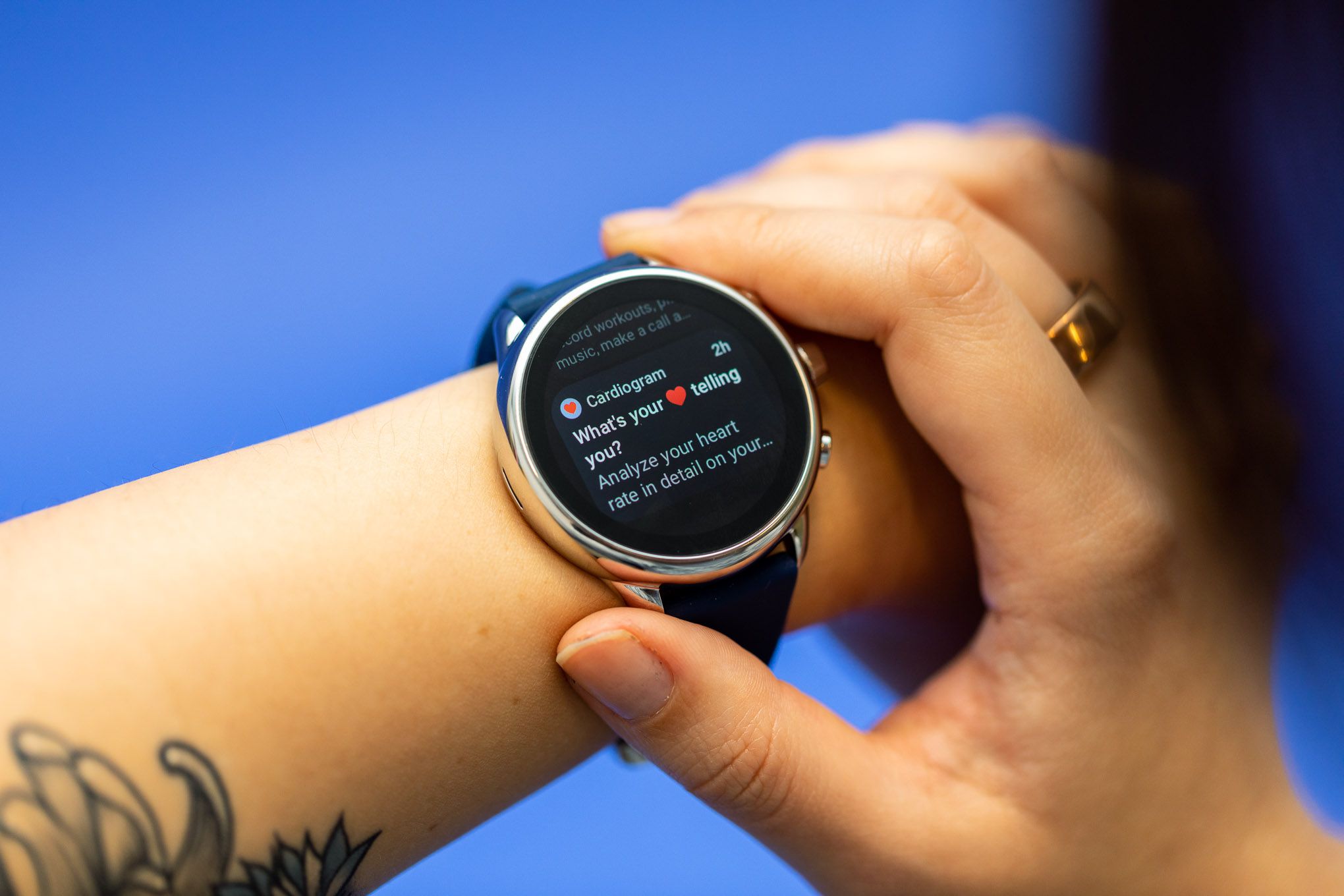
But for the price, you’re going to get a fuller experience with the $280 Samsung Galaxy Watch 5 or the $350 Pixel Watch. Both those watches have a more polished version of Wear OS 3, faster processors, better battery life (though it’s a close call with the Pixel Watch), and more robust health features. If you’re willing to pay $50 extra, you can also get cellular connectivity.
Hopefully, Fossil finally gets a more even playing field with the Gen 7. Ideally, it’d get the new Qualcomm Snapdragon W5 Plus chip, and once the Wear OS 3 transition nears completion, perhaps there’ll be a more uniform experience across all Android smartwatches. (Hint hint, Google Assistant for everybody else, perhaps?) Lord knows Fossil has had a lot of patience with the Wear OS platform over the years. It’d be nice to see that pay off — for them and the Android smartwatch ecosystem as a whole.
Agree to Continue: Fossil Gen 6 Wellness Edition
Every smart device now requires you to agree to a series of terms and conditions before you can use it — contracts that no one actually reads. It’s impossible for us to read and analyze every single one of these agreements. But we started counting exactly how many times you have to hit “agree” to use devices when we review them since these are agreements most people don’t read and definitely can’t negotiate.
To use the Fossil Gen 6 Wellness Edition, you must pair it with an iPhone or Android smartphone. That includes the phone’s terms of service, privacy policy, and any other permissions you grant. You may also be prompted to allow the Fossil Smartwatches app to access your phone’s photos, location, Bluetooth, motion and fitness data, voice assistant data, notifications, background app refresh, and cellular data.
By setting up the Fossil Gen 6 Wellness Edition, you’re agreeing to two mandatory agreements:
There are also optional permissions you can grant, including sharing data usage and opting into marketing emails. If you choose to enable the Alexa, you must agree to both Amazon Alexa’s privacy policy and terms of service as well as the Alexa Skill by Fossil’s privacy policy and terms of service. You will also be prompted to grant permissions to allow Alexa to view and edit activity data, device information and settings, heart rate data, SpO2 data, and workout data. If you choose to integrate with Apple HealthKit or Google Fit, you must also agree to those terms.
Final tally: two mandatory agreements and several optional agreements.
